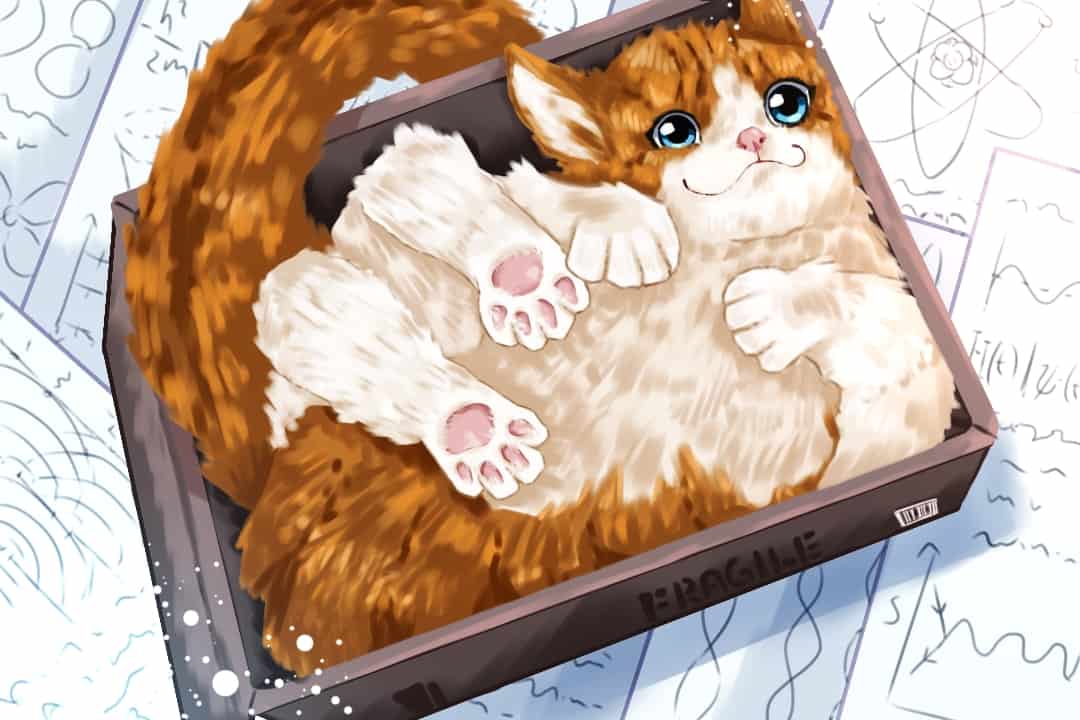Cats, our eccentric feline friends, have been our loyal and moody companions for nearly 10,000 years. They have made their way into our hearts and homes, as well as into our research. Research using cats, either physically or metaphorically, has helped explain cultural phenomena and helped shape the advancement of many fields, such as quantum physics and human medicine.
Schrödinger’s cat: A thought experiment for quantum superposition
In the twentieth century, cats played a metaphorical role in our understanding of the functioning of the universe. Perhaps the most famous of all cats in the world of science is the cat portrayed in physicist Erwin Schrödinger’s thought experiment on quantum superposition — the phenomenon where a quantum object can exist in a quantum object can exist in two or more states at the same time, and only when a state is observed does it take a single position.
The Schrödinger’s cat thought experiment is as follows: a cat is placed into a sealed steel box, along with a small amount of radioactive substance and a Geiger counter. The Geiger counter is attached to a hammer, which is precariously placed next to a vial of poisonous gas. If the Geiger counter detects radioactive decay, it would release the hammer, releasing the poisonous gas, killing the cat.
After about an hour, there is an equal likelihood that the radioactive substance decayed or did not decay. If the radioactive substance decayed, the Geiger counter would detect the decaying substance and release the hammer, breaking the vial of poisonous gas, thus killing the cat. While the box is still sealed, there is no way of knowing whether the Geiger counter detected decaying radioactivity, and therefore, there is no way of knowing if the cat was living or dead.
In terms of quantum mechanics, this thought experiment exemplifies the idea of superposition, in that a particle — in this case, the cat — can exist in all possible states simultaneously, both alive and dead. This simultaneous existence and its collapse into a single state when observed, referred to as the Copenhagen Interpretation, was the core concept explored in Schrödinger’s cat experiment.
While the box is still sealed, the cat is said to be in a state of superposition: it is both alive and dead simultaneously. However, we know a cat is not a quantum object, that it follows Newtonian Laws, and that it can only be alive or dead, not both alive and dead.
By the laws of quantum mechanics, a state of superposition cannot be observed. If scientists attempt to observe a state of superposition, the superposition collapses, and all outcomes somehow occur. This theory, known as the Many Worlds Thought Experiment, states that new, parallel universes are created when the box is opened — a split in the universe occurs, where the cat can be both alive in one universe and dead in another.
By using the elusive and aloof cat, Schrödinger has pointed out a way in which Newtonian laws and quantum principles disagree. He uses the cat to portray the absurdity of applying quantum principles to large-scale objects that operate using Newtonian laws. The cat thought experiment illustrates the obscurity of the Copenhagen interpretation of quantum mechanics.
Cats in biological and behavioural research
In addition to being symbolic representations of complex phenomena or cultural regulations, cats have also made their way into the realm of physical research. Not only are researchers interested in the social structure and behaviour of the cats themselves but analogously how cats can inform human research.
For example, Mikel M. Delgado and colleagues — in the Departments of Veterinary Medicine, Biochemistry and Biophysics, and Surgical and Radiological Sciences at the University of California — have looked at DNA sequences and proteins near the end of chromosomes, known as telomeres, of neonatal kittens to see if being separated from their mothers had an impact on their health, developmental trajectories, and lifespans. Although previous studies in other species had shown telomere length changing due to maternal separation, Delgado and colleagues didn’t find evidence for this in neonatal kittens who were appropriately hand-raised by humans.
Further, cats have also been a prime target for neurological advancements. Classic work in the 1950s and 1960s resulted in the groundbreaking discovery that the two hemispheres of the brain could function independently of one another if separated. Dr. Roger Sperry, a neuroscientist in California, performed split-brain procedures on various mammals, including cats, to identify the function of the corpus callosum — the connective fibres between the left and right hemispheres of the brain.
Dr. Sperry and his team severed the corpus callosum of these animals, and the results of these surgeries indicated that the hemispheres could still function, though independently, from each other. Because of the success of this work, Dr. Sperry was able to perform the same procedure on humans who had long suffered from debilitating seizures. By severing the connection between the two hemispheres, the electrical activity of the seizures is slowed or eliminated, allowing the individual to go on and lead a relatively normal and healthy life.
In addition to the physical and behavioural research using cats, Schrödinger’s cat experiment has paved the way for other scientific metaphorical associations and clinical extrapolations. Cats have been and will continue to be interesting subjects for thought experiments and research.



No comments to display.